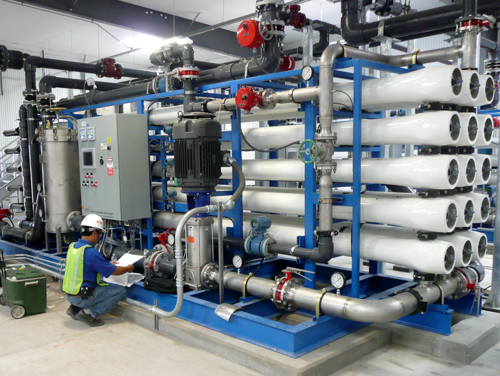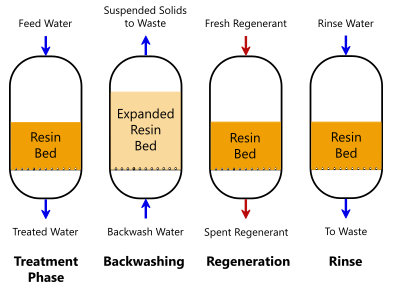Just How PFAS Treatment Guarantees Clean and Lasting Water
The visibility of PFAS, commonly referred to as "forever chemicals," poses considerable obstacles to water quality and public health. Advanced therapy modern technologies, consisting of activated carbon adsorption and membrane layer filtering, have emerged as effective options to reduce these pollutants. By employing these techniques, communities can not just accomplish cleaner water yet additionally foster sustainable practices that secure ecological communities. The effects of these treatments expand past instant health and wellness benefits; they raise critical concerns regarding long-term water monitoring approaches that need to be resolved to guarantee a resilient future. What does this mean for our approach to water sustainability?

Understanding PFAS Contamination
PFAS, or per- and polyfluoroalkyl substances, have become a significant ecological worry because of their widespread prevalence and determination in the setting. These synthetic chemicals have actually been made use of in different industrial applications and consumer items, consisting of non-stick cooking equipment, waterproof apparel, and food product packaging, because of their one-of-a-kind buildings such as water and grease resistance.
The contamination of soil and water resources by PFAS occurs largely via industrial discharges, firefighting foam usage, and seeping from landfills. pfas management. Once launched, these compounds are resistant to deterioration, resulting in their build-up in the atmosphere. This perseverance elevates crucial problems, as PFAS can travel fars away through groundwater and surface water systems, influencing alcohol consumption water materials and ecosystems

Health Threats of PFAS
The determination of PFAS in the setting elevates substantial health issues for people exposed to these compounds. Known as "for life chemicals," PFAS do not damage down easily and can collect in bodies gradually. Research study has actually connected PFAS direct exposure to numerous adverse health effects, consisting of body immune system disorder, liver damages, and increased threat of specific cancers - pfas management. Notably, researches have actually revealed elevated cholesterol degrees and possible effects on reproductive and developing wellness, particularly in pregnant individuals and babies.
The universality of PFAS in customer items, such as non-stick cooking equipment, water-repellent textiles, and food product packaging, further intensifies the risk of exposure. Drinking water infected with PFAS is a considerable concern, as these chemicals can leach into groundwater resources. Prone populaces, consisting of children and those living near commercial websites, might face increased dangers as a result of their developing systems and possible for higher exposure levels.
As awareness of these health and wellness dangers continues to expand, governing firms are beginning to develop guidelines read this article for PFAS degrees in drinking water. Public health and wellness campaigns are necessary to minimize direct exposure and shield neighborhoods from the lasting impacts of these dangerous substances.

Innovative Therapy Technologies
Just how can we efficiently tackle the difficulties posed by PFAS contamination in water sources? Ingenious treatment modern technologies are becoming critical solutions in the mission for clean water. These approaches concentrate on the removal or devastation of per- and polyfluoroalkyl substances (PFAS), which are infamous for their determination in the setting.
One promising method is adsorption using sophisticated materials, such as triggered carbon and ion exchange materials. These products have shown efficacy in recording PFAS molecules from water. Another noteworthy modern technology is membrane filtering, which utilizes nanofiltration and reverse osmosis to different contaminants at the molecular degree, therefore supplying a barrier against PFAS.
Additionally, advanced oxidation processes (AOPs) employ strong oxidants to break down PFAS substances right into harmless byproducts. This technique is especially reliable for dealing with highly contaminated water resources. Bioremediation strategies, using details microbes, are likewise being explored to degrade PFAS.
As research study continues, hybrid systems that incorporate multiple modern technologies might provide improved performance, dealing with the complexities of PFAS contamination. The growth and application of these innovative therapy innovations are necessary steps towards ensuring the security and sustainability of our water sources.
Advantages of Reliable PFAS Therapy
Efficiently treating PFAS contamination in water sources significantly enhances public wellness and environmental safety. PFAS, commonly described as "forever chemicals," are resistant to destruction and can gather in the body, bring about serious health threats such as cancer cells, liver damages, and immune system disorder. By implementing effective therapy approaches, areas can lower exposure to these dangerous compounds, eventually boosting the health and wellness end results of their populations.
In addition, successful PFAS treatment adds to the preservation of neighborhood click resources ecological communities. Polluted water can adversely influence marine life and disrupt the delicate equilibrium of regional habitats. By making sure tidy water, treatment processes secure biodiversity and keep environmental integrity.
Additionally, effective PFAS removal can promote public confidence in water quality. When areas are ensured that their alcohol consumption water is without hazardous contaminants, it promotes a sense of safety and health. This depend on is crucial for community interaction and assistance for recurring water management initiatives.
Future of Water Sustainability
In the middle of expanding worries regarding water quality and shortage, the future of water sustainability depends upon innovative strategies and joint initiatives. As communities face the impending risks of impurities like PFAS, the advancement of sophisticated treatment modern technologies is crucial. These modern technologies not only concentrate on the removal of hazardous substances however likewise advertise the reuse and recycling of water, thereby reducing general demand.
Moreover, reliable water administration plays an important role in making sure sustainable techniques. Policymakers should incorporate clinical research study with governing structures to develop clear guidelines for water use and therapy. Stakeholder engagement, consisting of regional communities and sectors, cultivates a feeling of shared duty and motivates sustainable methods across numerous fields.
Financial investment in framework is likewise critical; upgrading aging systems to incorporate modern filtering and purification techniques can substantially enhance water high quality. Welcoming environment-friendly modern technologies, such as all-natural purification systems, can give eco-friendly solutions.
Eventually, the future of water sustainability depends on a holistic method that combines modern technology, policy, and community involvement. By focusing on these elements, we can guard our water sources for generations to find, ensuring tidy and lasting water for all.
Final Thought
Finally, the reliable therapy of PFAS is essential for ensuring tidy and lasting water. By using innovative modern technologies such as activated carbon adsorption, membrane filtering, and progressed oxidation processes, areas can dramatically lower the wellness risks connected with these impurities. The try this site integration of these therapy methods supports ecological community defense and improves biodiversity. Inevitably, robust PFAS treatment methods add to long-term durability in water monitoring, cultivating public trust in water high quality and advertising sustainable techniques.